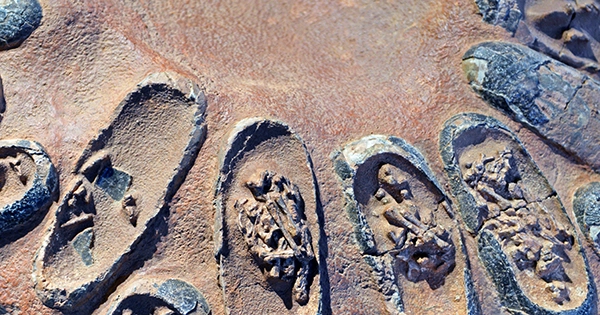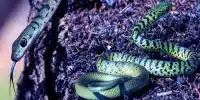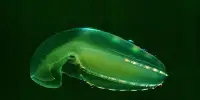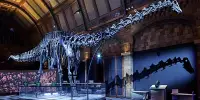Ovum-in-ovo, or an egg inside an egg, is a phenomenon that occasionally occurs in birds such as chickens, whose specialized uteruses are more susceptible to the magic trick than those of reptiles. Researchers have discovered a fossilized egg within a fossilized egg, a really eggceptional find for dinosaurs – and, indeed, reptiles in general. The ovum-in-ovo was discovered in a titanosaurid dinosaur, offering information on their oviduct shape, which was likely more comparable to that of birds that are well-adapted to lay eggs in sequential order. This might imply that, like its present counterparts, this group of sauropod dinosaurs was capable of laying egg after egg.
The “unique and remarkable find” is described in a research published in the journal Scientific Reports and originates from the Upper Cretaceous Lameta Formation in Madhya Pradesh, western Central India. The egg was discovered near Padlya hamlet in Dinosaur Fossils National Park Bagh, where researchers discovered 52 titanosaur sauropod nests. Our egg-in-egg superstar was discovered to have two layers of shell in one of the sauropod dinosaur nests, which had ten eggs. The relevance of this ovum-in-ovo is what it reveals about these dinosaurs’ reproductive strategy and the anatomy of the organs involved.
Sea turtles, for example, lay their eggs in a single swoop from a generalized uterus, laying hundreds of eggs in one sitting. Birds, on the other hand, have a unique uterus that lays one egg before moving on to the next, which is thought to be linked to the creation of these malformed double eggs. Crocodiles have segmented uteruses similar to birds’, but they still employ the reptile way of producing and releasing all the eggs at once. So, what can we learn about sauropods from our petrified ovum-in-ovo?
“The finding of an ovum-in-ovo egg in a titanosaurid dinosaur nest implies that their oviduct anatomy was comparable to that of birds, implying that sequential egg laying was possible in this group of sauropod dinosaurs,” the researchers concluded. “This new discovery shows that ovum-in-ovo disease is not exclusive to birds, and sauropods have reproductive behavior that is remarkably comparable to other archosaurs.”
While the scientists recommend more investigation before drawing definite conclusions, the unexpected egg-in-egg finding shows that this oological peculiarity is not exclusive to birds. It also shows that sauropods shared more in common with birds and crocodiles than with non-archosaurian reptiles, making it a world-first find as well as a gold nugget for evolutionary biology. The researchers noted, “The current discovery of an ovum-in-ovo pathological egg in a titanosaurid dinosaur nest is the first of its type in dinosaurs and confirms its existence in reptiles as well.”













